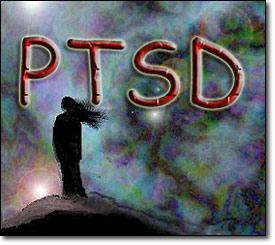 The way clinicians have applied the diagnosis of PTSD has changed drastically throughout the last hundred years. The diagnosis was initially coined to describe purely combat-related sequelae. Later, it became a more generalized account of the impacts of trauma experienced in “every day” situations (e.g., domestic violence, muggings). Today, it is an expansive depiction of how all of us are affected by the terrors of our time.
The way clinicians have applied the diagnosis of PTSD has changed drastically throughout the last hundred years. The diagnosis was initially coined to describe purely combat-related sequelae. Later, it became a more generalized account of the impacts of trauma experienced in “every day” situations (e.g., domestic violence, muggings). Today, it is an expansive depiction of how all of us are affected by the terrors of our time.
The DSM-5, as opposed to the DSM IV, is more oriented to behavioral symptoms accompanying PSTD and includes four basic major symptom clusters. These include re-experiencing, arousal, avoidance and persistent negative alterations in cognitions and mood. Diagnostic thresholds have been lowered for children and adolescents and separate criteria have been added for children 6 and under.
New Extensive Online Course:
PTSD
Offered for 20 CE Credit Hours
Our course, Post-Traumatic Stress Disorder: Defined, Described, Detailed, and Debated, is one of the most comprehensive explorations of this diagnostic category and the treatments available for the symptoms of PTSD. Through the review of 58 online articles by groundbreakers in the movement (such as Dan Siegel and Francine Shapiro) to understand and treat PTSD, you will not only gain expansive knowledge about the diagnosis and its etiology, but will also learn about the most effective psychotherapeutic and integrative strategies to manage this disorder. You will also review medications currently in use to treat the symptoms of PTSD.
The course provides foundational information from Attachment Theory and Interpersonal Neurobiology, as well as creative treatments and therapies such as EMDR. Further, you will be exposed to criticism and debate regarding the use of the label itself and can come to your own conclusions about whether or not PTSD is a useful diagnostic expression.
PTSD Recap:
- Many clinicians use the diagnosis of PTSD quite liberally to describe reactions to all forms of trauma. However, in order to meet the diagnostic criteria for PTSD, the stressor experienced must involve actual or threatened death or serious injury, or a threat to the physical integrity of oneself or others.
- While the term “PTSD” was coined in more recent times, researchers have been describing the symptoms and effects that define PTSD for nearly a century.
- In order to both understand and to more effectively treat PTSD, theorists have looked to the research conducted about dissociation and primary attachment to determine if there are impacts by nature or nurture that predispose us to this disorder.
- Suboptimal attachment experiences may predispose a child to psychological vulnerability.
- Psychological vulnerability may be reflected in the brain’s inadequate neuroendocrine response to stress, which may increase the likelihood that an individual with that vulnerability, who experiences trauma, will develop problematic trauma sequelae.
- Siegel suggests that the core of dissociation and disorganized attachments result from an impaired neural integration, which leads to impaired interpersonal integration.
- Schore suggests that the consequences of traumatic attachment can be described as dysregulation in the right hemisphere of the brain (subsequent to disorganized attachment), which then creates an inability to regulate relational stress.
- The protective function of dissociation may be reflected in the brain’s effort to resolve conflicts that are irreconcilable. Further, dissociation allows the being to escape reality, numb emotions and disown traumatic experiences.
- The experience of uncontrollable trauma elicits greater symptoms of PTSD than the experience of trauma in which the victim is able to take any action.
- While the symptoms of PTSD can be enduring, the outcome for communities as a whole following terrorist acts is for resilience, rather than psychopathology.
- Following traumatic exposure, assisting victims to focus on concrete, solvable problems may allow them to feel a greater sense of control in their lives.
- There are a number of other pharmaceutical interventions, which appear to be promising in the treatment of PTSD. For instance, while Prazosin was designed to treat high blood pressure, it has also been used effectively to treat noncancerous enlargement of the prostate, and is currently being used to treat the nightmares and agitation experienced by many combat veterans.
- According to the World Health Organization (2013) guidelines for the management of conditions that are specifically related to stress, trauma-focused cognitive behavioral therapy (CBT) and eye movement desensitization and reprocessing (EMDR) are the only psychotherapies recommended for children, adolescents and adults with posttraumatic stress disorder (PTSD). No pharmaceuticals are recommended.
Some of the therapies which seem to be most effective to treat the symptoms of PTSD include: